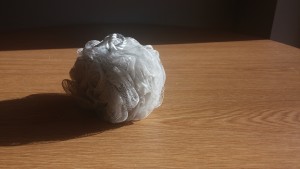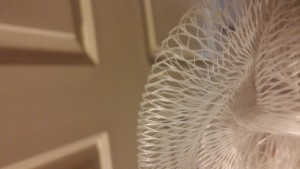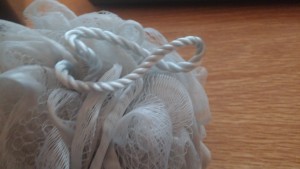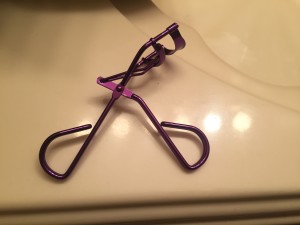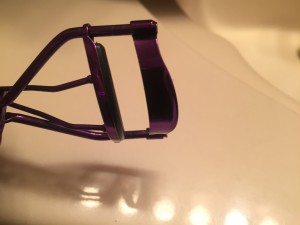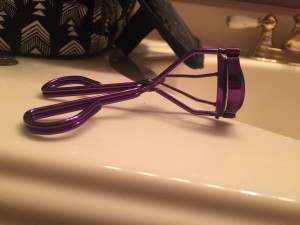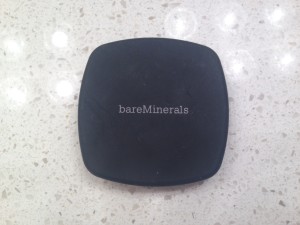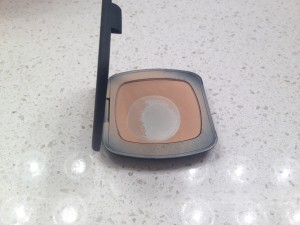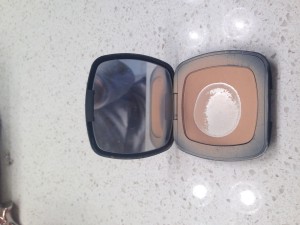Step 1, Description: The object is a light gray color. Is a spongy material, if one were to squeeze it with their hands it would compress easily then expand back to its prior size. The object is about 4 and a half to 5 inches in diameter and is in a crude shape of a sphere. It has a small rope, similar in color, that looks as if it could be hung from it. Up close the material is a netting that looks to be made out of a synthetic material. The netting appears to be in long strands that is rolled up and held together with something. Most of all it was found in the shower to be along with other body care products. The object was wet prior to me drying it. It smells of a body wash one may find in the bottle next to the object. The material that makes up this object may look coarse and hard but is rather soft and durable. Looking at the object and moving it back and forth in my hands I noticed my hands to be relieved from the dry skin I had on the surface.
Step 2, Deduction: One can deduce that this object is intended to scrub skin off based off of how simple it can. Along with how soft it is the user could use it throughout the body without causing any serious abrasions to the skin. Along with its placement in the bathroom one could use this in lieu of a wash clothe for the added benefit of removing skin. Due to the smell of the object it has been in recent contact with a body wash that smells distinctly the same.
Step 3, Speculation: The user of this object can be male or female. This product helps promote removal of dry skin, allowing the user to feel that their skin is healthier than usual. Along with this the user will most likely be female more than male since dry skin on males is more socially acceptable. The user would continually purchase this product since it is viewed as an effective product.
Questions about the loofah:
Does it have multiple uses?
What are the downsides, if any?
How often is a loofah replaced and why is it best to replace?
Is there a way to reduce the amount of bacteria that is found on the loofah?
What was the original intention of the loofah if it has the possibility of promoting bacteria growth?
Bibliography
Bottone, E. J., A. A. Perez, and J. L. Oeser. 1994. “Loofah Sponges as Reservoirs and Vehicles in the Transmission of Potentially Pathogenic Bacterial Species to Human Skin”. JOURNAL OF CLINICAL MICROBIOLOGY. 32 (2): 469.
In this peer-reviewed article that is found in a highly respected journal, states that the bath sponge commonly used is a “vehicle” to move bacteria throughout the body. The authors state that the sponge is a common carrier of bacteria that survives and thrives on the skin that is removed during the cleaning process. The statements a backed with a plethora of scientific test results, leading to the possible assumption that the object is not in favor of the user or their intentions.
Bratskeir, Kate. “You Should Probably Stop Using A Loofah In The Shower. Sorry.” The Huffington Post. July 29, 2014. Accessed January 23, 2016. http://www.huffingtonpost.com/2014/07/29/loofah-clean-healthy_n_5613734.html.
The author of this open web article, takes the stance that this object is used improperly. The author states that the object is used during shower periods to help promote a cleaner self but states that it is clearly a wrong notion. In the article the author says that the loofah sponge is a bacteria covered scrub that isn’t helping rather making you worse off.
